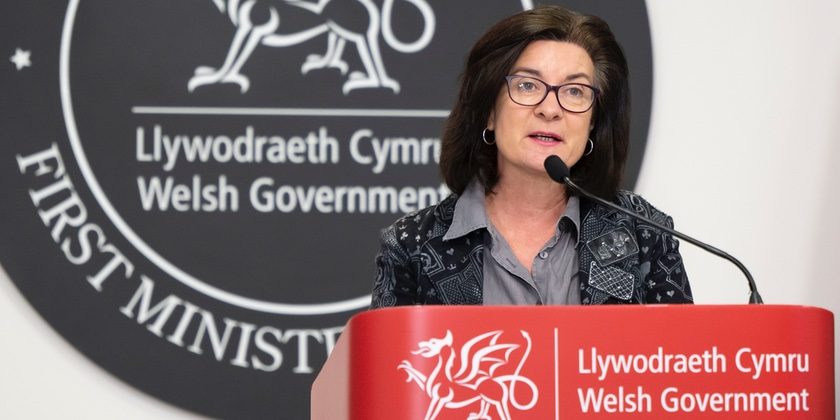Almost one in five people on NHS waiting list in Wales as figures reach a record high

NHS waiting lists in Wales have continued to rise with the health minister today urged to “get to grips” with the issue.
New figures show that the number of patient pathways waiting to start treatment in October rose from 761,100 to just under 764,500.
This is the eighth consecutive rise and is once again the highest figure on record.
The number of patient pathways differs from the number of people on a waiting list – with some patients waiting to start more than one treatment.
Despite this in October there were 596,000 individual patients waiting for treatment.
This is the eighth consecutive increase and the highest on record, again.
Today’s figures reveal that almost one in five people in Wales are now on an NHS waiting list.
The number of patient pathways waiting less than 26 weeks increased to 58.6 per cent in October.
This is despite being relatively stable after falling significantly from the levels pre-pandemic.
The number of pathways waiting longer than 36 weeks increased in October, to just over 231,900, remaining high in historical context.
An estimated 25,700 pathways were waiting more than two years, 63.5% lower than the peak and continuing to fall month on month.
The average (median) time patient pathways had been waiting for treatment at the end of October remained the same as the previous month at 19.9 weeks.
Ambulance Response Times
Today’s figures paint a worrying picture as the health service heads into what is typically seen as its busiest time of year.
The number of immediately life-threatening made to the Welsh Ambulance Service in November was the third highest on record.
Last month there were 4,669 category red calls to the ambulance service – the equivalent of 13.8 per cent of all calls.
49.5 per cent of red calls received an emergency response within eight minutes.
This was 2.3 percentage points higher than in October.

Picture: Welsh Government
According to the Welsh Government the median response time in the four years prior to the pandemic ranged between 4 minutes 30 seconds and 6 minutes for red calls.
But in November, the average (median) response time to immediately life-threatening ‘red’ calls was 8 minutes 4 seconds.
Although this was 22 seconds quicker than the previous month, and 14 seconds faster than November 2022, it remains below the Welsh Government target of 65 per cent of immediately life-threatening calls receiving a response within eight minutes.
In North Wales just under 50 per cent of red calls received a response within the target time.
Emergency Departments
Last month saw just under 85,100 attendances to all emergency departments across Wales.
This is an average of 2,836 attendances per day; this was 174 attendances less per day on average than in the previous month.
The Welsh Government has a target of 95 per cent of new patients spending less than four hours in emergency departments from arrival until admission, transfer or discharge.
This target was missed with 69.5 per cent of attendees across Wales seen within the target time.

Picture: Welsh Government
Betsi Cadwaladr University Health Board was the best performing against the Welsh Government target, with 81.9 per cent spending less than four hours in an emergency department.
Throughout November 4,865 patients attended the A&E at the Wrexham Maelor Hospital in November.
Of those 62.9 per cent were seen within four hours.
77 per cent were seen within eight hours and 85.4 per cent within 12 hours.
Today’s figures have been criticised by opposition parties who have called on the Welsh Government to “get to grips” with the challenge it faces.
Response
Plaid Cymru spokesperson for Health and Social Care, Mabon ap Gwynfor MS said today’s figures show that “simply throwing money at the system while also cutting funding for preventative services won’t tackle the root causes.”
He said: “Month after month, NHS waiting times are published with disappointing inevitability, and at the end of 2023 we learn that waiting lists have reached a record high.
“Waiting times for cancer treatment is the second highest on record, and ambulance response times remain some way behind target.
“This comes a year and a half after the Labour Government announced its programme to cut waiting lists in Wales, but the evidence would suggest their plans have dismally failed.
“Plaid Cymru has continuously called for a prevention revolution to get to grips with the chronic issues plaguing our NHS and to invest in the workforce, to create a more resilient and robust health and care service.
“Monthly increases in the number of people on NHS waiting lists clearly shows that simply throwing money at the system while also cutting funding for preventative services won’t tackle the root causes of the huge challenges the service faces.
“We need a clear strategy from Welsh Government that includes a more targeted approach to tackle waiting times by prioritising those most in need, to better fund preventative health measures, and to invest in the workforce by providing them with the working conditions and contracts they deserve.”

Welsh Conservative Shadow Health Minister, Russell George MS
Welsh Conservative Shadow Health Minister, Russell George MS said: “Waiting lists in our Welsh NHS have hit a new record high for both treatment and diagnostic services, with 2-year waits still standing at over 25,000 which is 135 times higher than in Conservative-run England. Labour is not delivering results.
“The Labour Government need to get to grips with this and finally prioritise our health service.
“I am urging Labour ministers to park plans for more politicians and constitutional tinkering so that Wales can see a fully resourced health service an end to these atrocious waiting times.
“However, it’s clear that only the Welsh Conservatives will commit to scrapping Labour’s vanity projects, spend the full 20% uplift from the UK Conservative Government on our Welsh NHS and deliver a substantial workforce plan to reverse the staffing crisis at the heart of our Welsh NHS.”
Minister for Health and Social Services, Eluned Morgan said the Welsh Government has “placed a clear focus on tackling both those patients with an urgent need and those that have waited the longest.”
Ms Morgan said: “We have continued to see the number of patients waiting over two years fall – down by 64 per cent since its peak.
“I previously tasked health boards with ensuring 97 per cent of those waiting at the end of December 2023 will be waiting less than 104 weeks. We were extremely close to achieving that in October (96.6 per cent) with four health boards already having achieved that target.
“Over the last 3 years we have reduced the average wait time for planned care patients by a third, with the median wait now stable at around 20 weeks.
“Demand for emergency care services remains significant, with the ambulance service now dealing with around 80 per cent more red calls daily than they did before the pandemic. The average number of daily red calls made in October was the third highest on record.

Health minister Eluned Morgan
“Despite this, 75 per cent of these calls received a response within 13 minutes. And we saw an increase from last month in the proportion of red calls being responded to within the eight minute target.
“People are also being seen quicker when they arrive at emergency departments with the average time to triage from arrival down to 18 minutes, the lowest it has been since March 2021.
“We have built on learning from last winter and put in place a number of measures to increase our resilience this year.
“These include 119 more ambulance staff than last year, and more staff available to respond to calls to the NHS 111 Wales service – which continues to help tens of thousands of people to receive urgent health advice, both online and over the telephone, 24 hours a day seven days a week.
“Thousands of people a month are also accessing care in the community and away from Emergency Departments, at Urgent Primary Care Centres and Same Day Emergency Care Services.
“It’s disappointing to see overall waiting lists reaching their highest levels on record. That is due to the number of people joining the waiting lists.
“But over the last 12 months waiting lists in Wales have only increased by 1 per cent compared to seven per cent in England.”
Spotted something? Got a story? Email: [email protected]
Latest News
